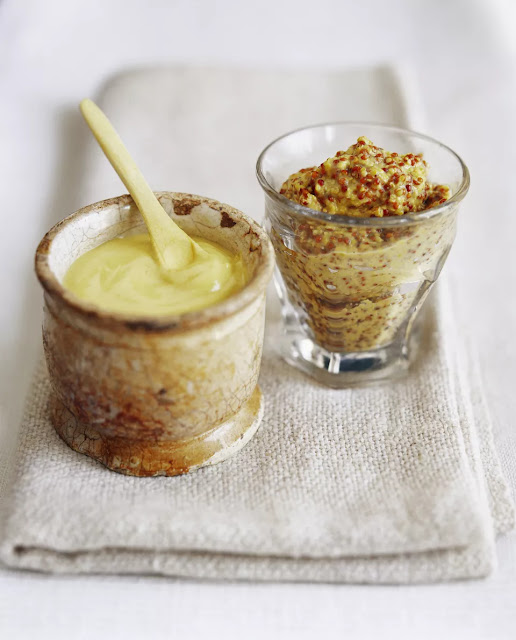Mustard was around thousands of years before Grey Poupon
Mustard, a member of the Brassica family of plants, bears tiny round edible seeds and tasty leaves. Its English name, mustard, is derived from a contraction of the Latin mustum ardens meaning “burning must.” This is a reference to the spicy heat of the crushed mustard seeds and the French practice of mixing the ground seeds with must, the young, unfermented juice of wine grapes.
The condiment mustard is made from the seeds of the mustard plant.
The seeds aren’t flavorful until they are cracked, after which they are mixed with a liquid to become prepared mustard. The culinary history of mustard as a condiment is extensive.
History of Mustard as a Condiment
As a condiment, mustard is ancient. Prepared mustard dates back thousands of years to the early Romans, who used to grind mustard seeds and mix them with wine into a paste not much different from the prepared mustards we know today. The spice was popular in Europe before the time of the Asian spice trade. It was popular long before pepper.
The Romans took the mustard seed to Gaul, where it was planted in vineyards along with the grapes. It soon became a popular condiment. French monasteries cultivated and sold mustard as early as the ninth century, and the condiment was for sale in Paris by the 13th century.
In the 1770s, mustard took a modern turn when Maurice Grey and Antoine Poupon introduced the world to Grey Poupon Dijon mustard.
Their original store still can be seen in downtown Dijon.
In 1866, Jeremiah Colman, founder of Colman’s Mustard of England, was appointed as mustard-maker to Queen Victoria. Colman perfected the technique of grinding mustard seeds into a fine powder without creating the heat which brings out the oil.
The oil must not be exposed or the flavor evaporates with the oil.
Mustard Species
There are about 40 species of mustard plants. The three species that are used to make mustard are the black, brown and white mustards. White mustard, which originated in the Mediterranean, is the antecedent of the bright yellow hot dog mustard we are all familiar with. Brown mustard from the Himalayas is familiar as Chinese restaurant mustard, and it serves as the base for most European and American mustards. Black mustard originated in the Middle East and in Asia Minor, where it is still popular. Edible mustard greens are a different species of mustard. The history of cultivation of mustard centers on the seeds, not the greens, which have been credited with originating both in China and Japan.
Mustard’s Medicinal History
Long ago, mustard was considered a medicinal plant rather than a culinary one. In the sixth century B.C., Greek scientist Pythagoras used mustard as a remedy for scorpion stings. A hundred years later, Hippocrates used mustard in medicines and poultices. Mustard plasters were applied to treat toothaches and a number of other ailments.
Mustard’s Religious History
The mustard seed is a prominent reference for those of the Christian faith, exemplifying something that is small and insignificant, which when planted, grows in strength and power.
Pope John XII was so fond of mustard that he created a new Vatican position—grand moutardier du pape (mustard-maker to the pope—and promptly filled the post with his nephew. His nephew was from the Dijon region, which soon became the mustard center of the world.
Mustard in Modern Culture
We all know that losers and quitters can’t cut the mustard (live up to the challenge), and perhaps the reason ballpark mustard is so popular is because pitchers apply mustard to their fastballs to get those strikeouts. The disabling and even lethal chemical weapon known as mustard gas is a synthetic copy based on the volatile nature of mustard oils.



0 Comments